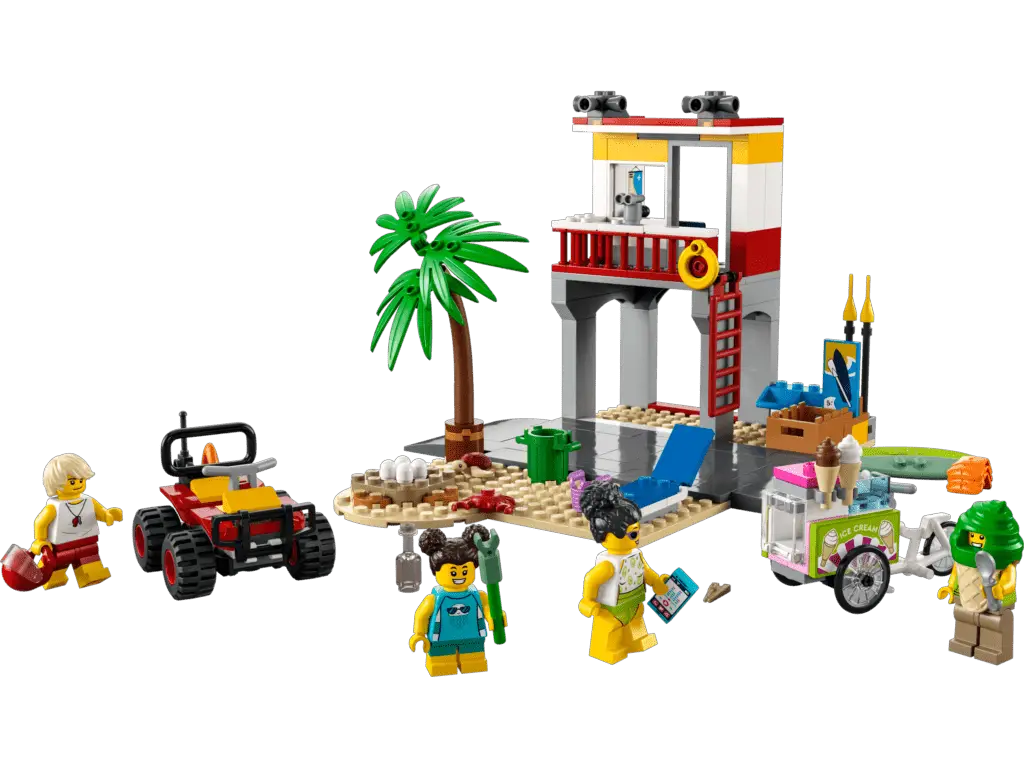Are you looking to buy a LEGO set for your kid as a birthday or holiday gift but find it to be so expensive?
LEGOs are probably the most popular toys around and can be an excellent gift for children and LEGO lovers. But why are LEGO sets so expensive?
It all comes down to their high quality, precise engineering, flexibility, durability, support, marketing, network, attention to detail, and many other things that LEGO is known for.
LEGO’s plastic is very high quality and has a high tolerance. They go through a lot of effort to ensure that all elements are up to standards, this means that LEGO bricks will stick together consistently.
Their packing system is also very precise and rarely makes any mistakes, which requires high-quality equipment and tuning.
LEGO also does extensive testing for its sets to make sure that the age ranges are fitting for kids. Something like, can a 5-year-old put these pieces together, or is it something that children can’t do until age 7? They re-test their elements and improve their building instructions regularly so that kids don’t get frustrated while playing.

Table of Contents
What Makes LEGO Toys Expensive?
High-Quality Materials
LEGO bricks are made from thermoplastic, which is a very strong and durable material. Acrylonitrile butadiene styrene, the specific plastic used is a petroleum-based product.
This means that an increase or decrease in the price of petroleum can influence the price of this plastic, which will in turn influence the price of LEGO sets.

LEGO pieces are also designed to be sturdy and endure frequent assembling and disassembling without losing their functionality. This also requires high-quality materials and the use of sophisticated equipment.
You can buy a LEGO set now and will still be playable for the next 20 or more years. This is not the duration most toys can last and also justifies the high price tag.
Precise Engineering
LEGO molds are very precise and about ten times narrower than a single human hair. Each LEGO brick has three numbers that indicate a mold’s position and the mold that was used to produce the brick.
This numbering system helps them discover and fix faulty bricks quickly to ensure that they meet their company’s standards.
This is why you will find out pieces from different LEGO sets are compatible with each other. And you can easily replace a missing or damaged piece with one from another set.
Manufacturing millions of bricks and elements that fit together can be expensive and that’s what most of their competitors can not do.
Size Of A LEGO Set
The size and number of pieces in a LEGO set have a great influence on its price. The bigger and more pieces it has, the more materials and work will be required in making such a set.
Licensing And Marketing
Licensing and marketing also contribute to the cost of some popular LEGO sets, but not all.
LEGO collaborates with popular brands like Harry Potter, Star Wars, Toy Story, Marvel, and others to produce sets according to those brands, which means they had to pay high licensing fees to those brands.
Your Location
LEGO price also depends on where you live, your country’s import tax, culture (how much people are willing to pay), and competing products on toy store shelves. For instance, LEGOs are way cheaper in the USA, than say Germany or Denmark.
Resale Value
LEGO sets don’t lose their value but usually increase in value with time when it’s retired from the shelves and become hard to find.
Their aftermarket value is usually very high due to an increased number of collectors. For example, the Millennium Falcon set sold for $500 when it was released in 2007 but nowadays sells for around $5,000 which is crazy.
While it doesn’t directly affect the price of normal LEGO sets, it makes them seem expensive.
Are LEGOs More Expensive Than They Were 15 Years Ago?
The answer is No, they have lowered in cost in recent years. The price of LEGO parts has gone down in most cases, but the pieces tend to be smaller than they were.
LEGO has made efforts that helped reduce their cost as they’ve moved some production to China and Mexico and lowered the price of their packaging, which as a result made the price-per-piece ratio of LEGO sets go down.
Why Are Retired LEGO Sets So Expensive?
Retired LEGO sets are so expensive because they are no longer manufactured and are hard to find on the market. Retired sets become expensive due to rarity, hard to get, and increased demand.
These LEGO sets tend to increase in value after they are retired and are usually sold by collectors and LEGO investors who buy sets when they are available and later sell them for profit when they are retired and become hard to find.
Why Are LEGO City Sets So Expensive?
The reason why City sets are so expensive may be attributed to their popularity. LEGO City sets are one of the most demanded sets and are always a bigger seller. This means that LEGO can charge more for these sets than what they are charging for other themes.

Another reason could be that big city sets have a lot more plastic and larger parts, and you can’t get away with large playsets and large baseplates.
Why Are LEGO Architecture Sets So Expensive?
LEGO Architecture’s high price tag might be because LEGO has to pay royalties to the architects of the building for them to get the rights to use their designs.

Another reason is that licensed LEGO sets are usually more expensive than their original designs.
Final Thoughts
Many factors affect the price of LEGO sets which may include but are not limited to the number of pieces, high-quality materials, licensing, precise engineering, attention to detail, resale value, production cost, marketing, and more.
However, larger sets and sets that have more pieces tend to be more expensive due to the cost of their production and packaging.
Sets such as LEGO City are expensive due to their popularity and high demand. LEGO architecture sets tend to be expensive because of the cost of paying for the royalties of the designs.


